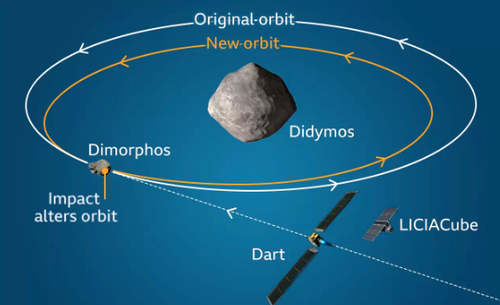NASA’s Suicide Spacecraft Changed Asteroid’s Path As Planetary Defenses Strengthened
Last month, NASA’s first mission to deliberately crash a spacecraft into an asteroid was an overwhelming success. The technology could one day go into practice to defend Earth against threatening objects.
“This is a watershed moment for planetary defense and a watershed moment for humanity,” NASA Administrator Bill Nelson stated in a press release, adding that the Double Asteroid Redirection Test (DART) mission “shows NASA is trying to be ready for whatever the universe throws at us.”
Dart’s accomplishment shows NASA’s strategy to catapult a suicide spacecraft at an asteroid to alter the primary path of the object through sheer kinetic force could be a future strategy to defend the planet.
“The impact was perfectly executed,” Megan Bruck Syal, the planetary defense project lead at Lawrence Livermore National Laboratory in California and a co-investigator of the $325 million mission, told WSJ.
NASA released data that shows DART’s impact on the asteroid named Dimorphos, about double the height of the Empire State Building and 525 feet wide, orbiting an asteroid about five times larger called Didymos, was reduced by 23 minutes to 11 hours and 23 minutes. This was confirmed by Webb and Hubble space telescopes, as well as ground-based telescopes.
“DART has given us some fascinating data about both asteroid properties and the effectiveness of a kinetic impactor as a planetary defense technology.
“The DART team is continuing to work on this rich dataset to fully understand this first planetary defense test of asteroid deflection,” Nancy Chabot, the DART coordination lead from the Johns Hopkins Applied Physics Laboratory, said in a statement released by the space agency.
This was the last image captured by DART seconds before impact.
BBC News quoted Chabot, who said protecting Earth from threatening asteroids would mean launching suicide spacecrafts into space years before estimated impacts to alter paths.
Tyler Durden
Tue, 10/11/2022 – 23:20

